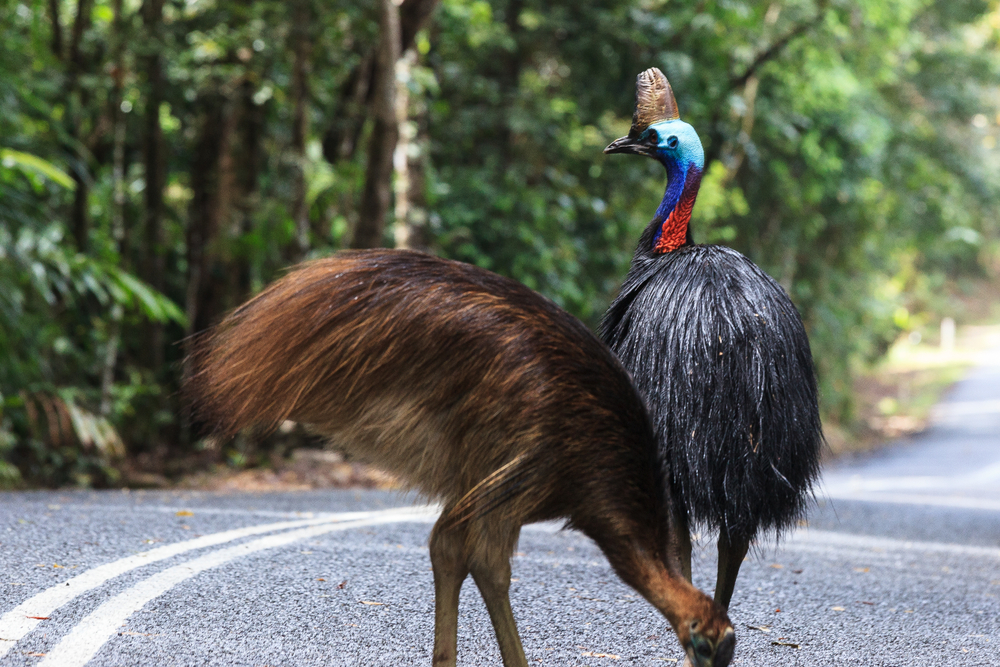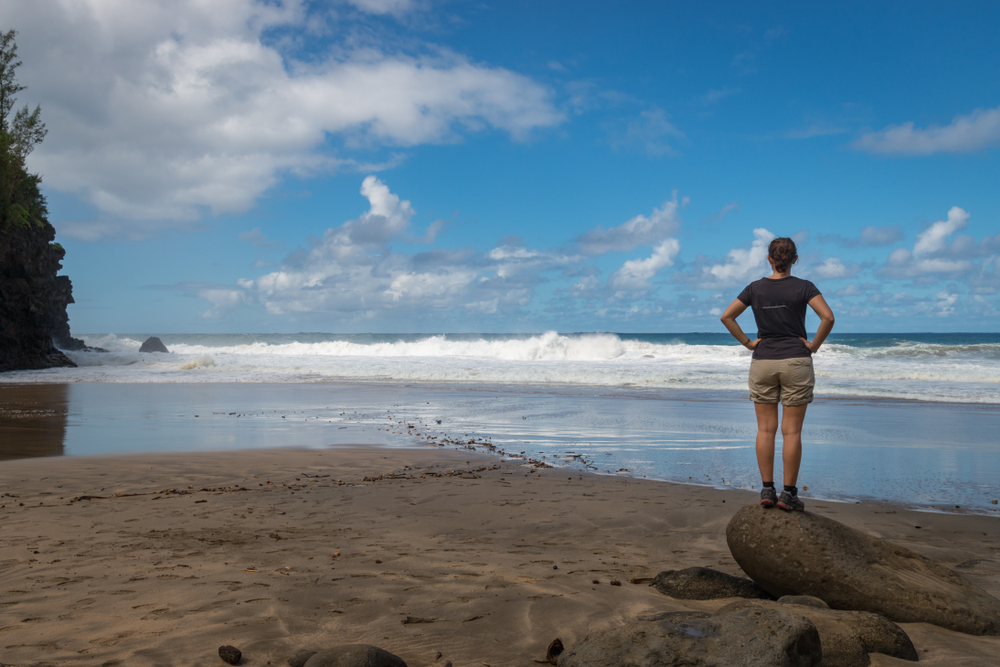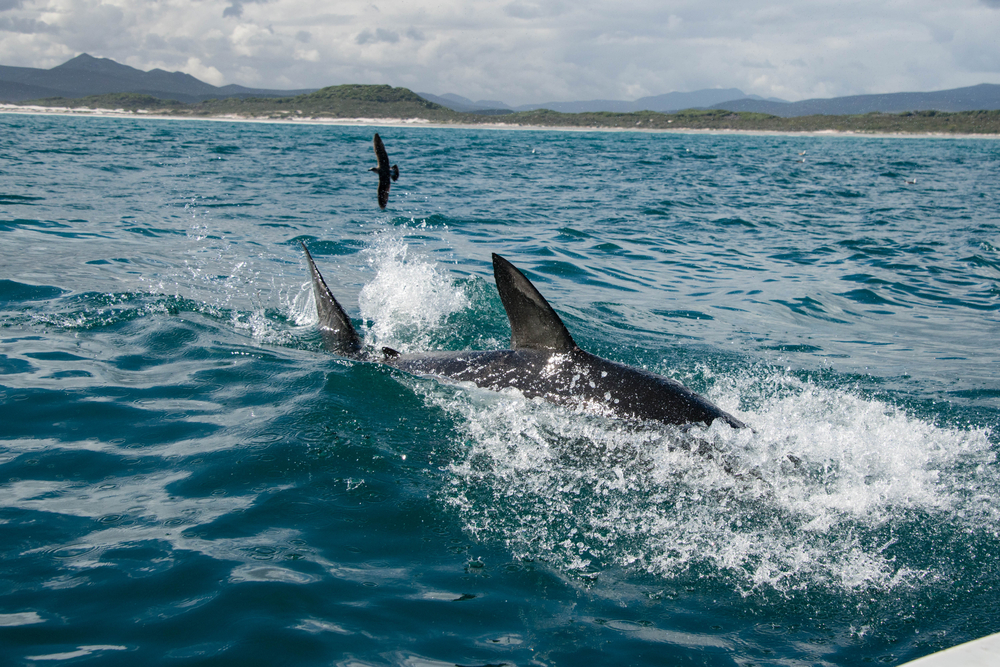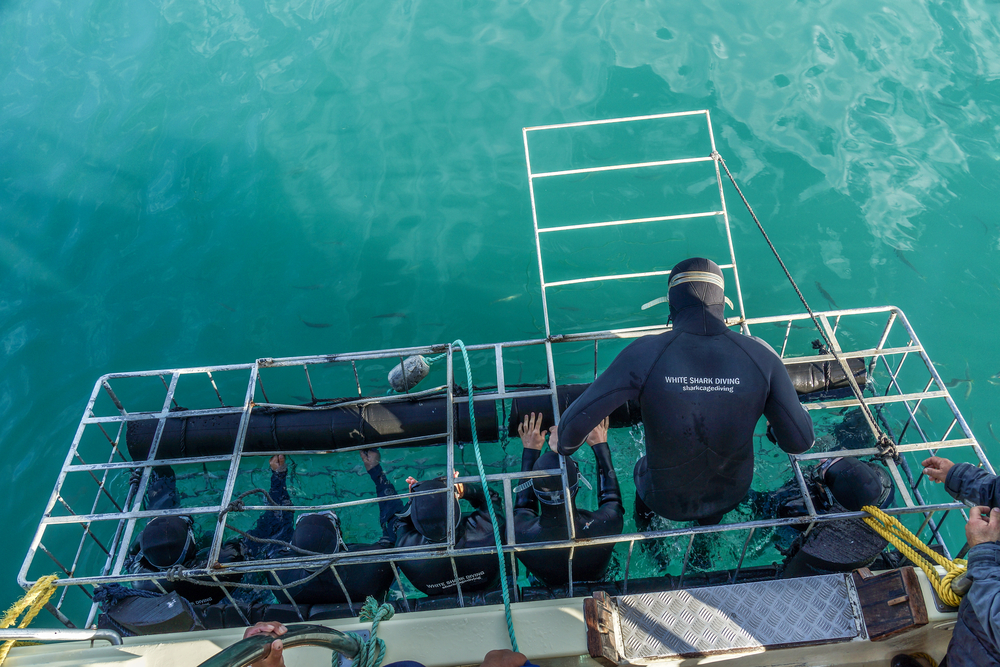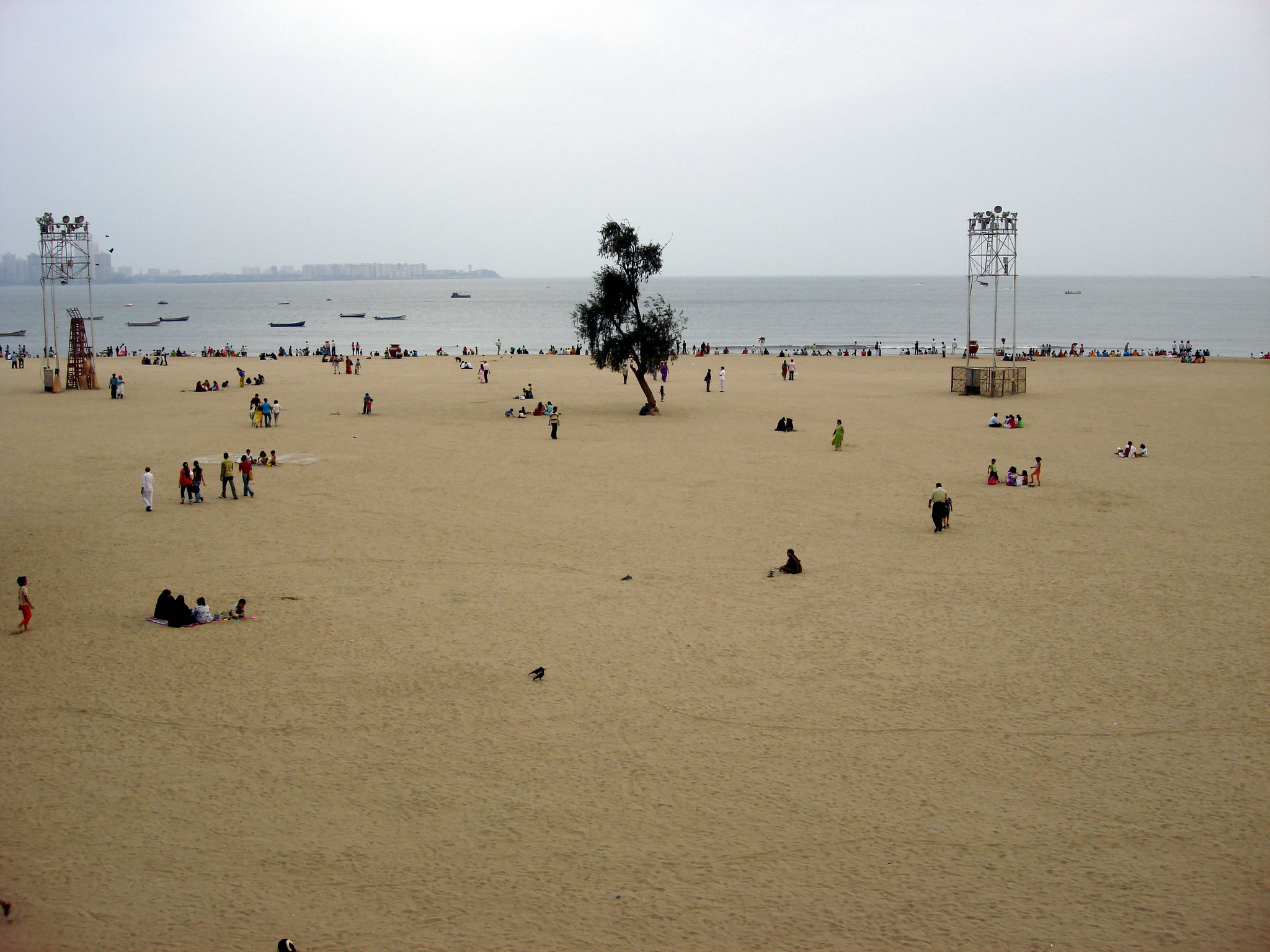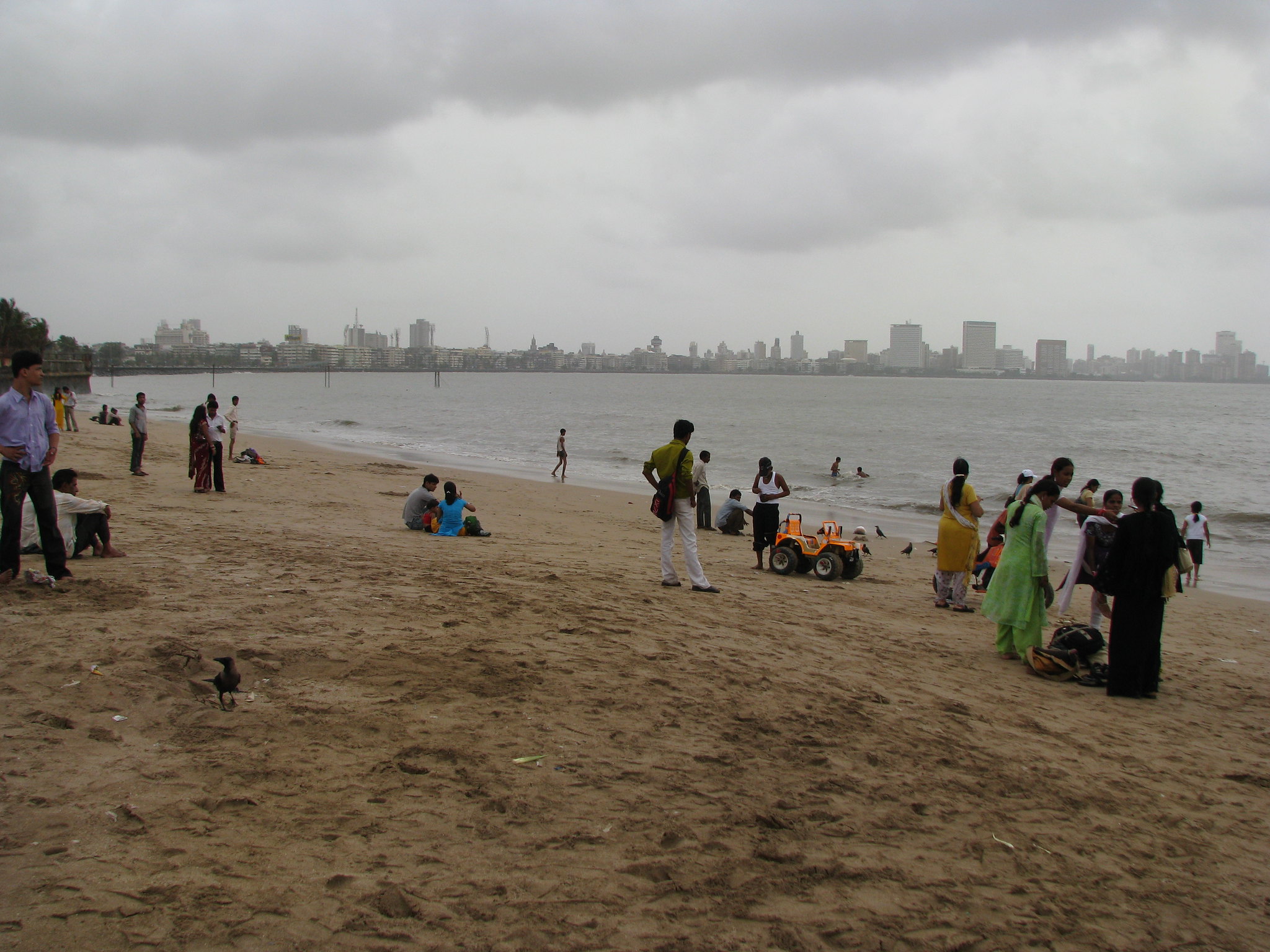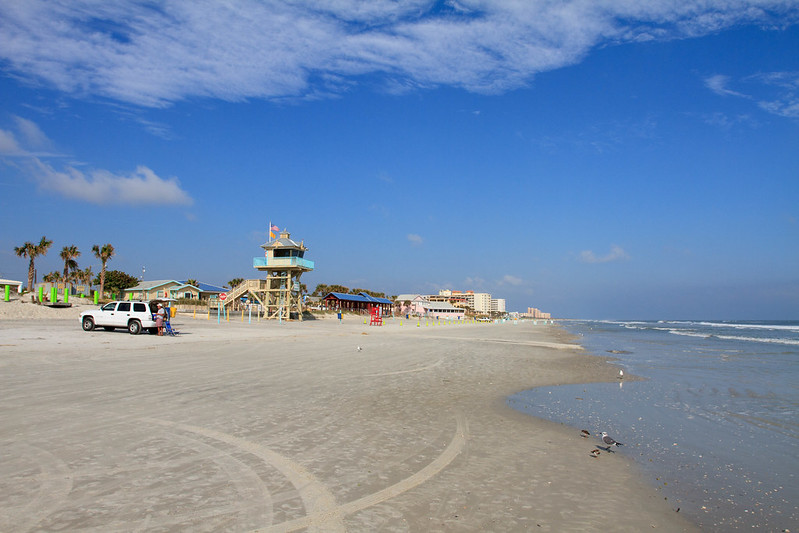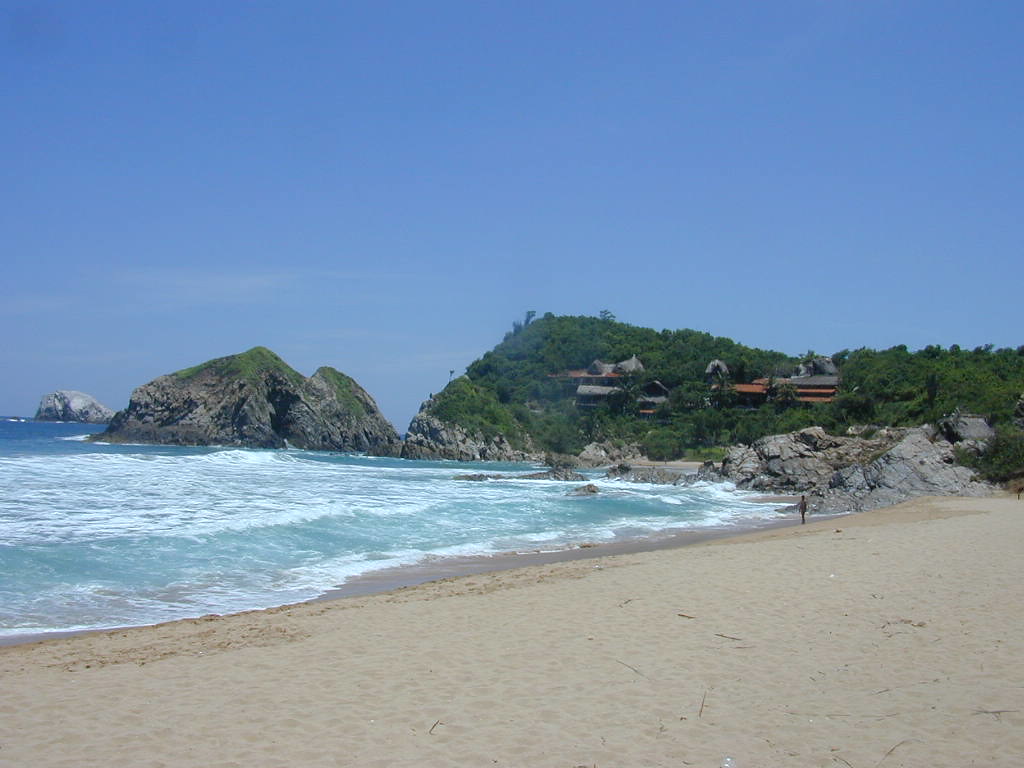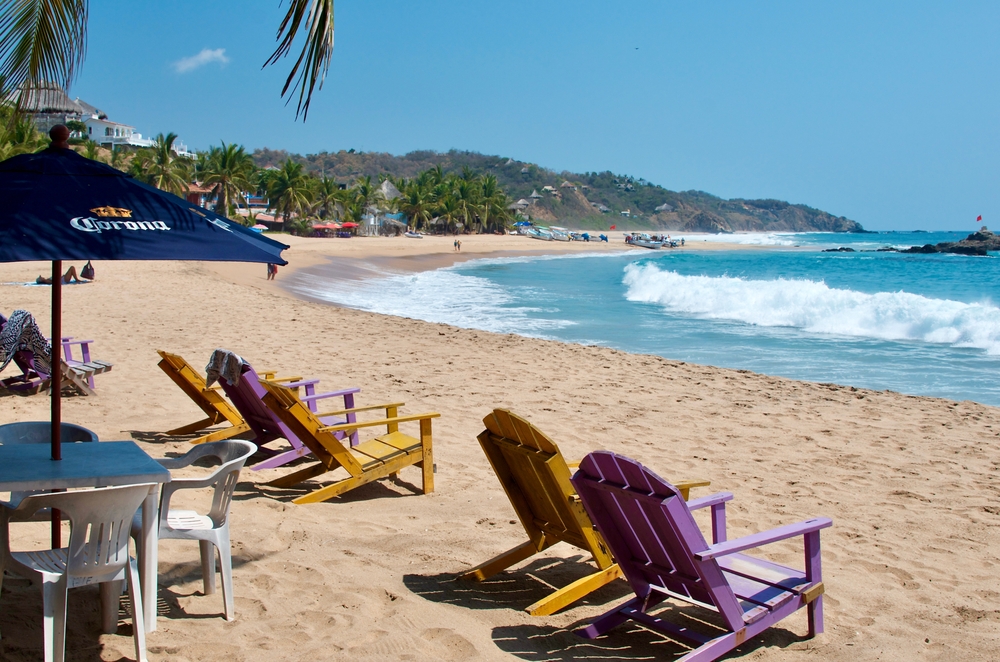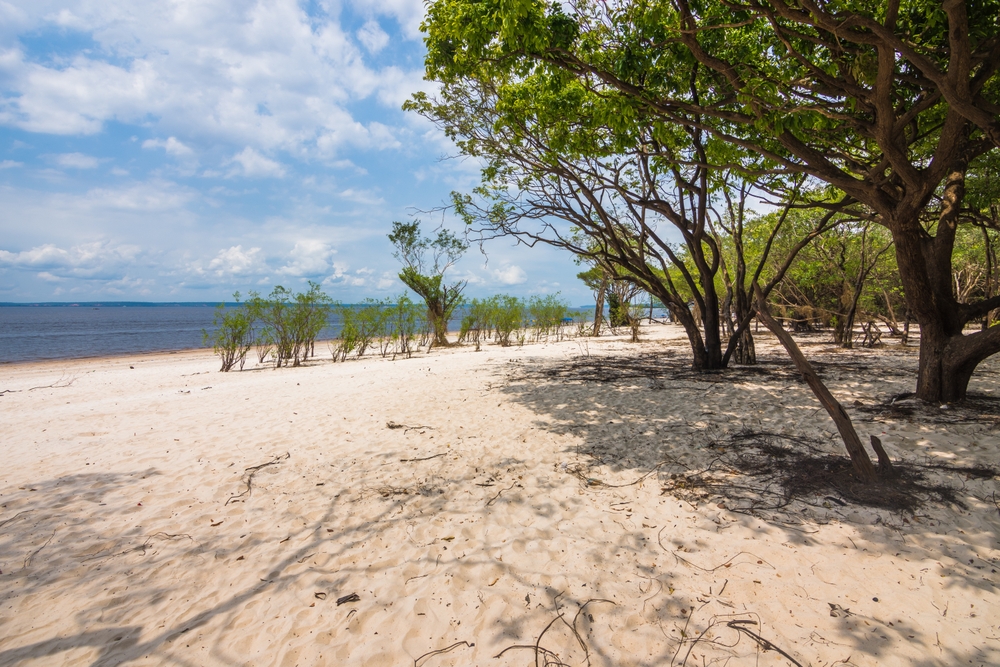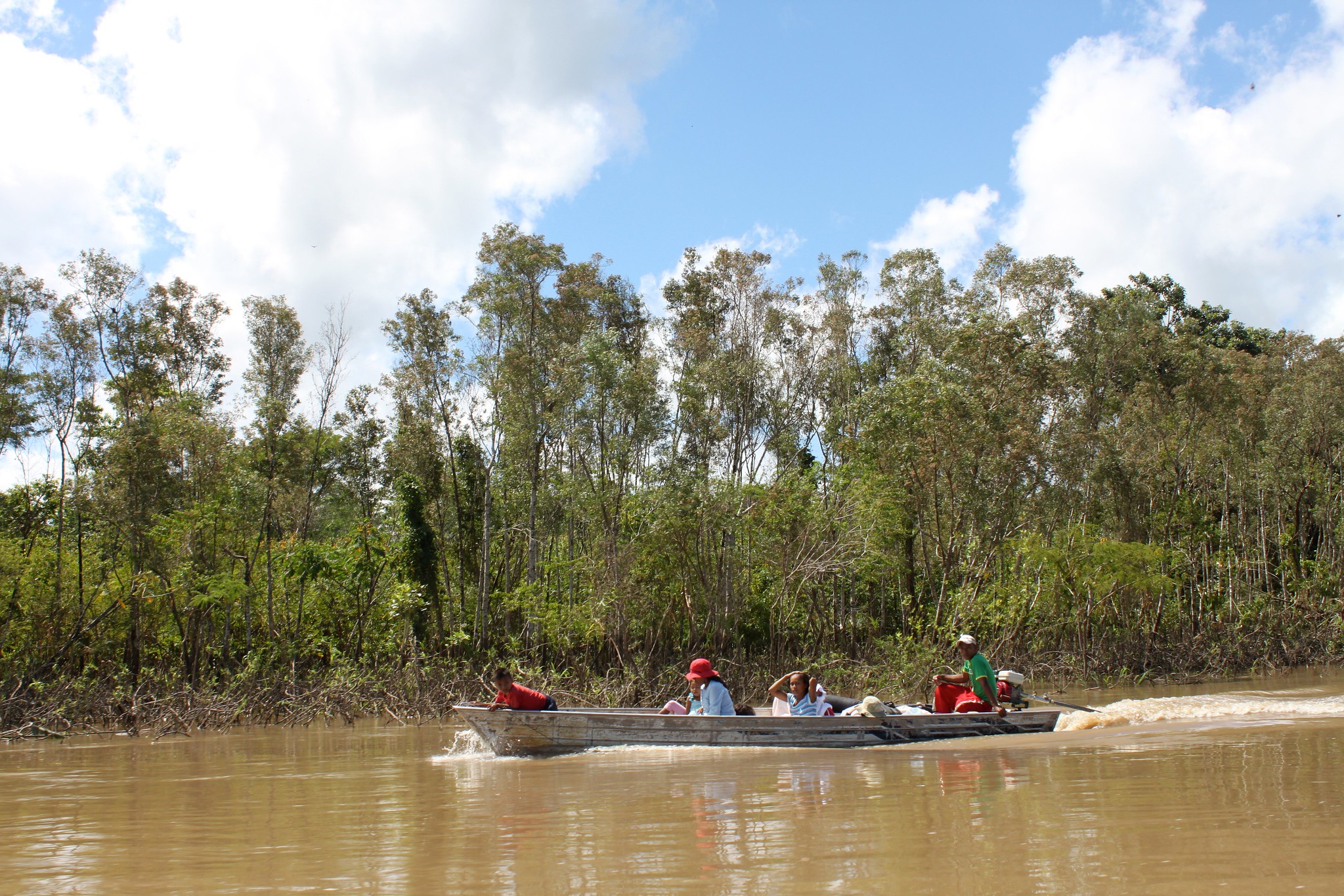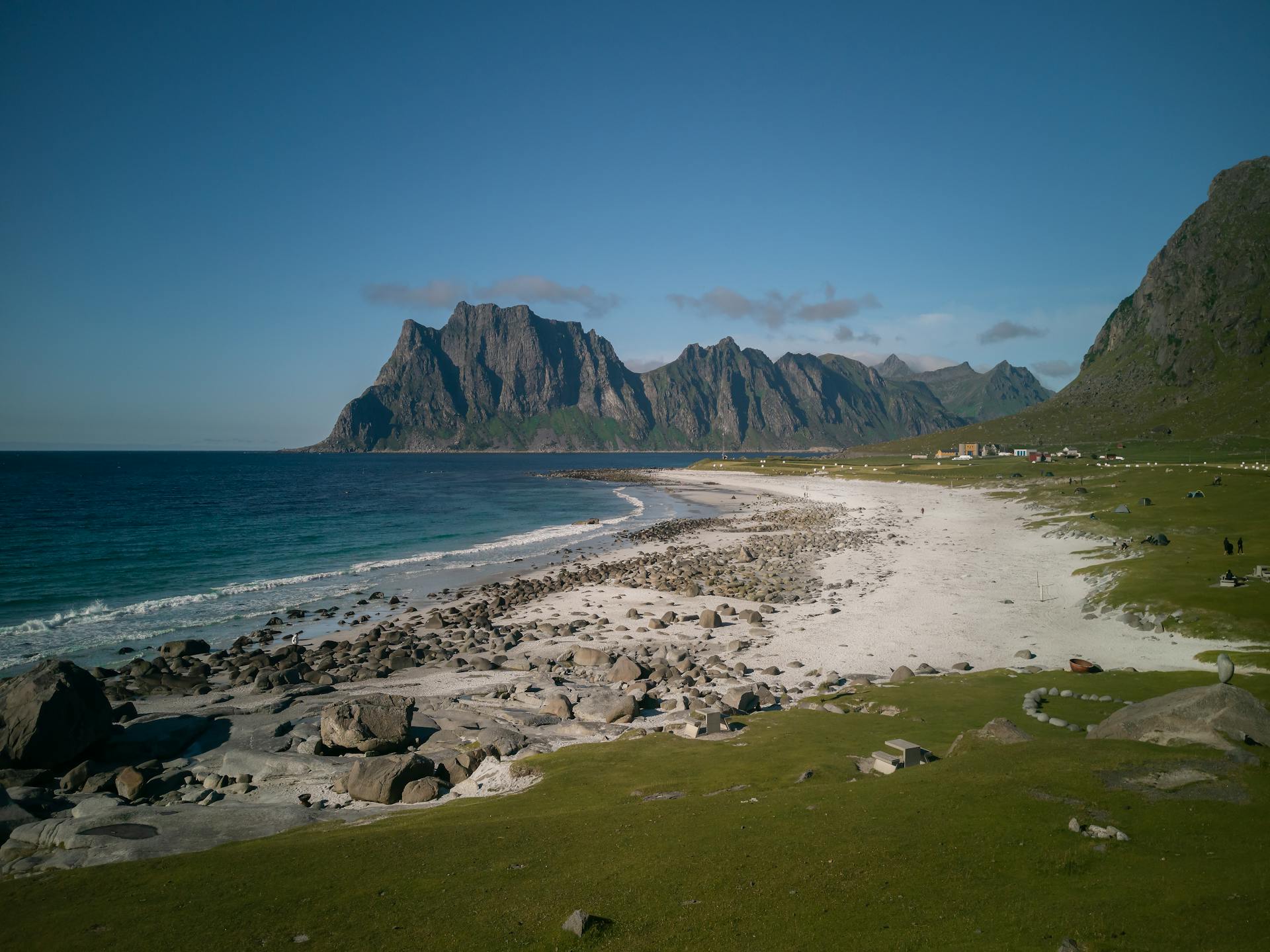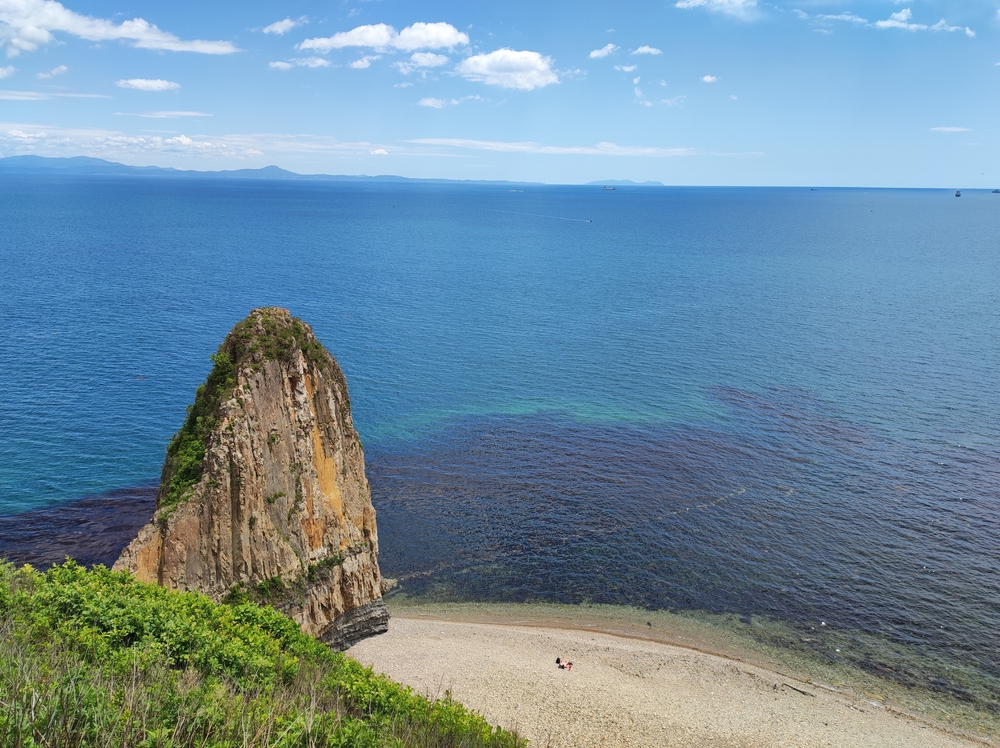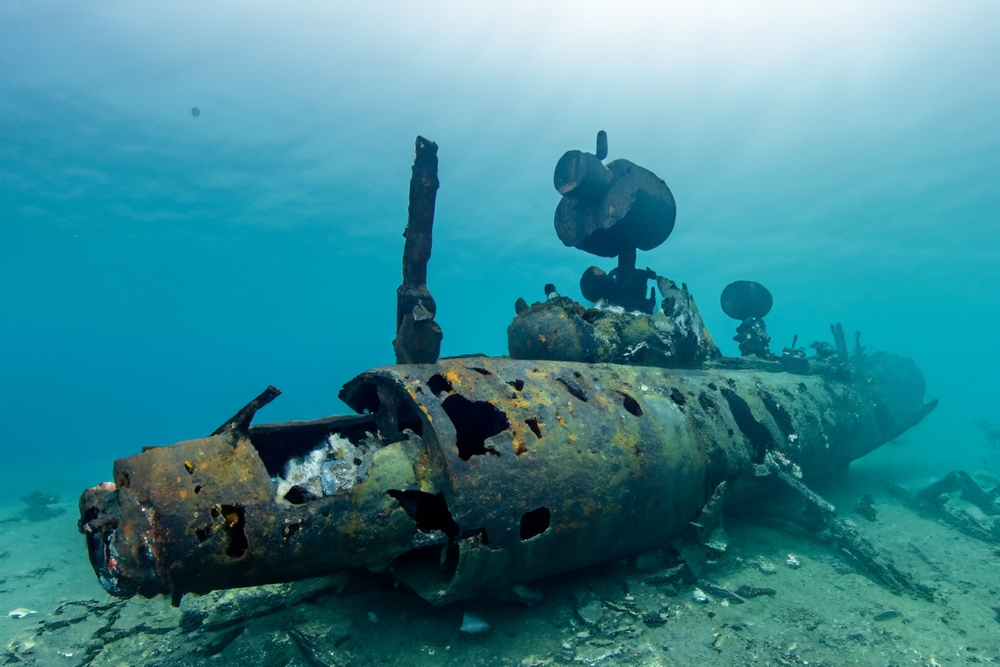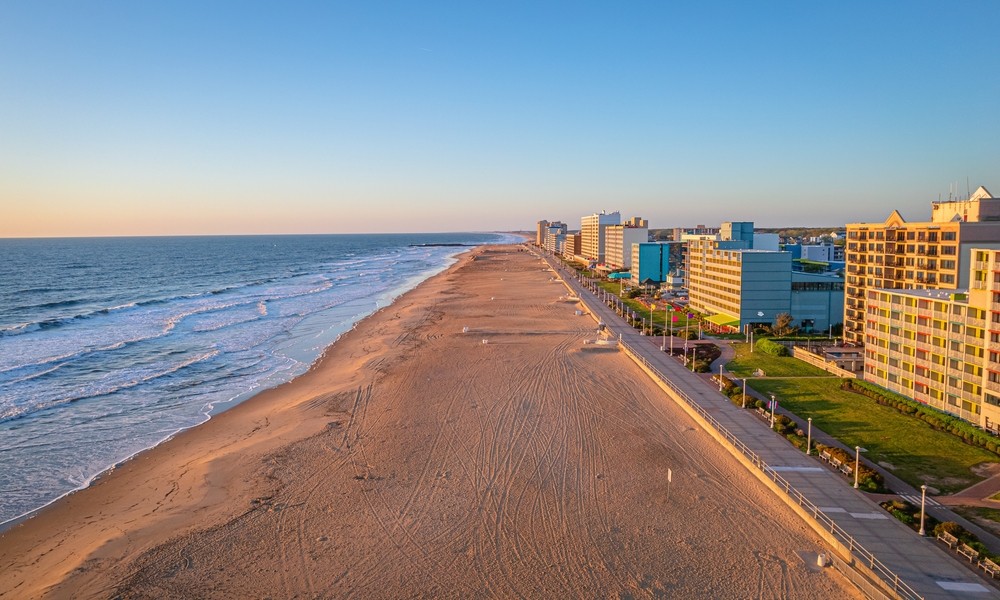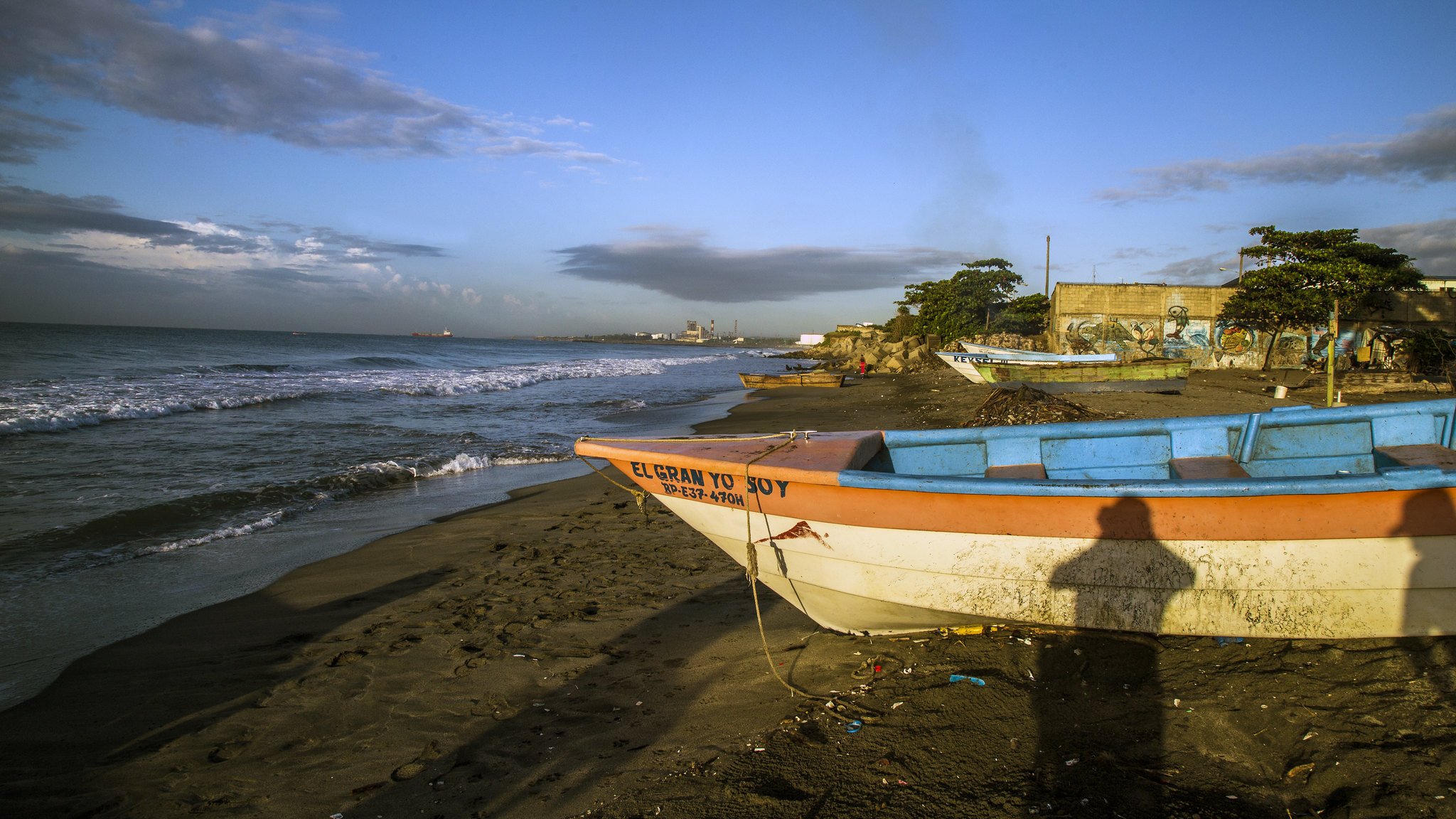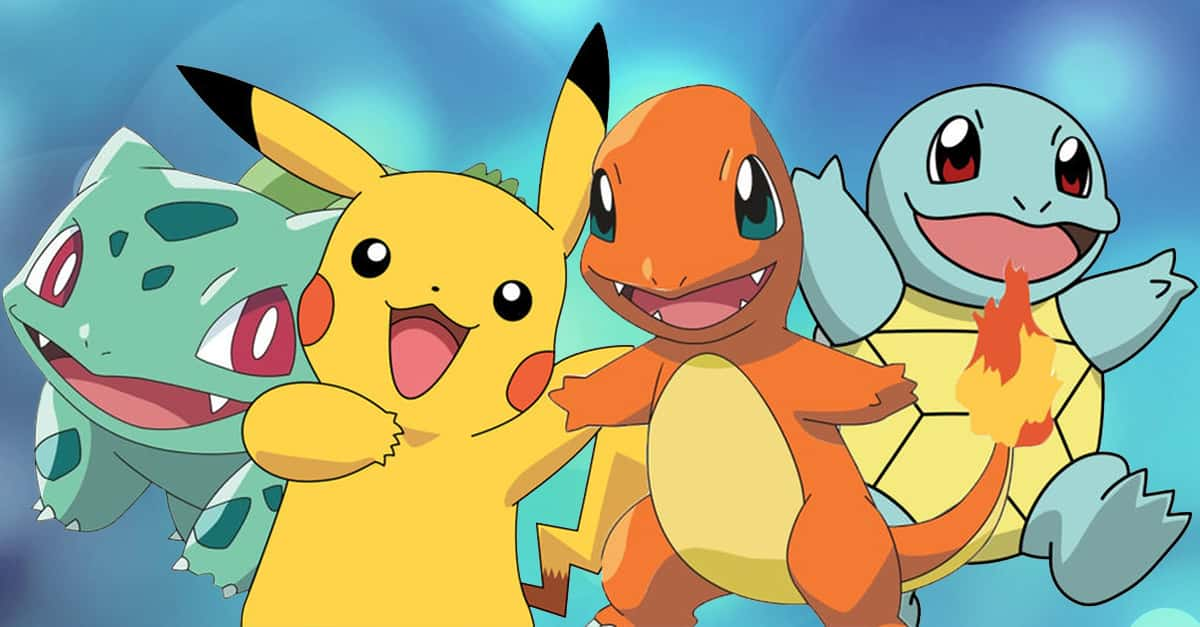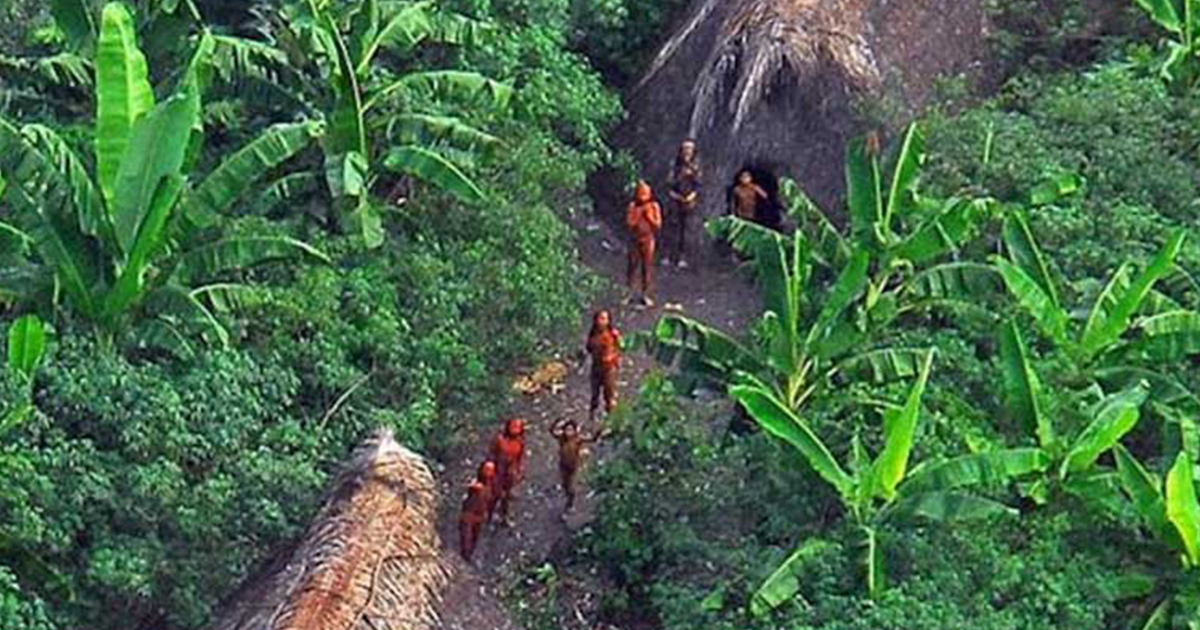Dangerous Beaches
Beaches are some of the most popular tourist destinations for a reason. After all, it? there anything better than a day at the beach?
Unfortunately, these beaches contain hidden dangers that could very well ruin your perfect vacation.

What makes a beach dangerous?
From poisonous, ancient creatures on sea and land, to modern evils, to the water itself, there's a lot to watch out for on a beach. Some of the world's most dangerous beaches contain multiple of these red flags.
Cape Tribulation, Australia
Cape Tribulation is situated in north Queensland in Australia. It has a rainforest ecosystem, and got its name from historical navigator Captain James Cook, after his ship ran aground near it.
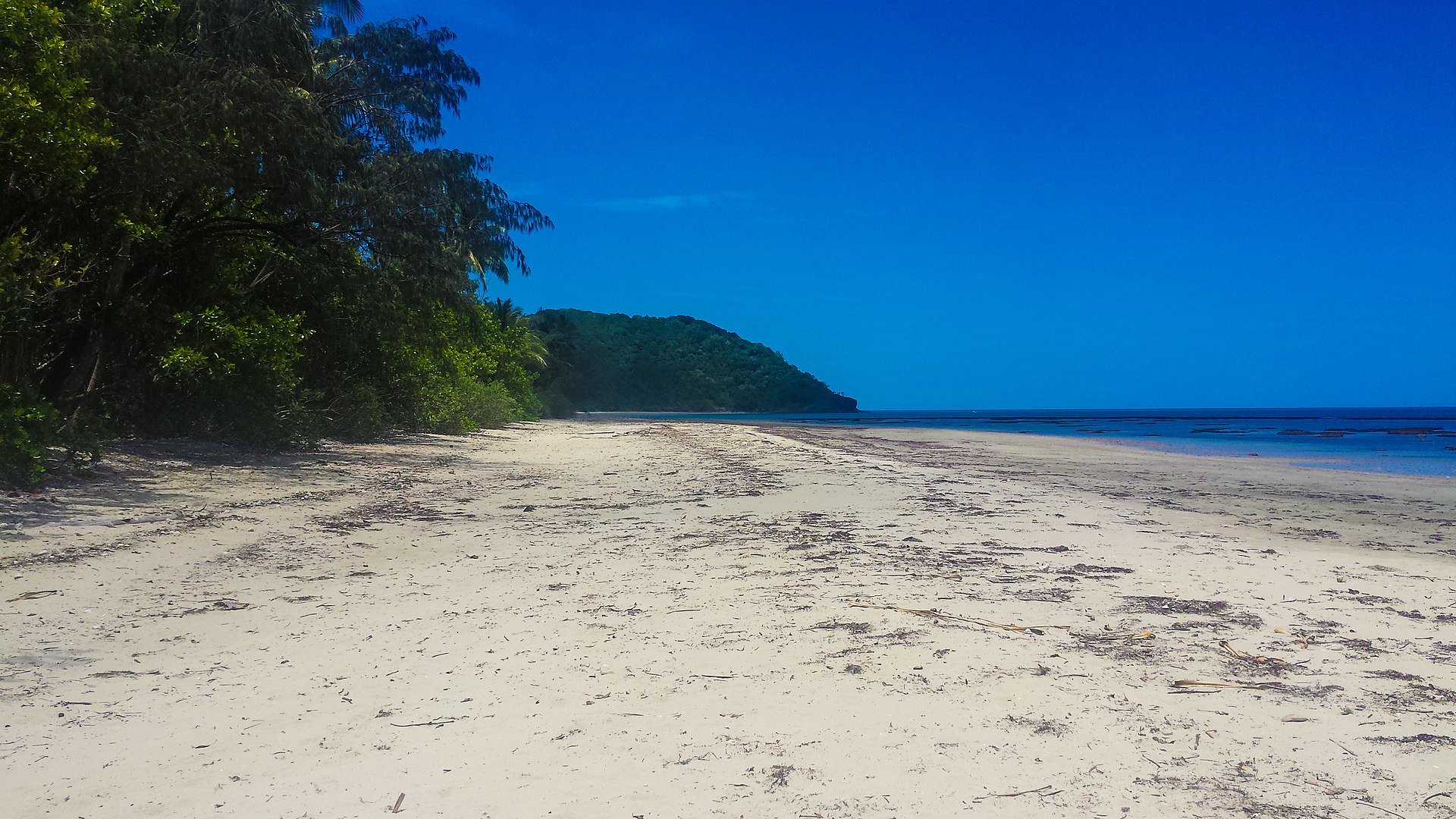 Luxure, CC BY 3.0, Wikimedia Commons
Luxure, CC BY 3.0, Wikimedia Commons
Cape Tribulation: Animal Dangers
Although Cook and his crew had a bad time at Cape Tribulation, in the modern day it presents even more problems, namely in its wildlife. The beach is home to poisonous snakes, crocodiles, and jellyfish.
Cape Tribulation: Enormous Birds
Probably the biggest danger on Cape Tribulation comes in the form of cassowaries. These emu-like birds, who are native to some tropical forests, can grow up to 160 pounds and are known to be very aggressive to humans.
Hanakapiai Beach, Hawaii
Hawaii's Hanakapiai Beach is only accessible by the Kalalau Trail that snakes along the coast. This makes it a breathtaking and often secluded spot to sight-see.
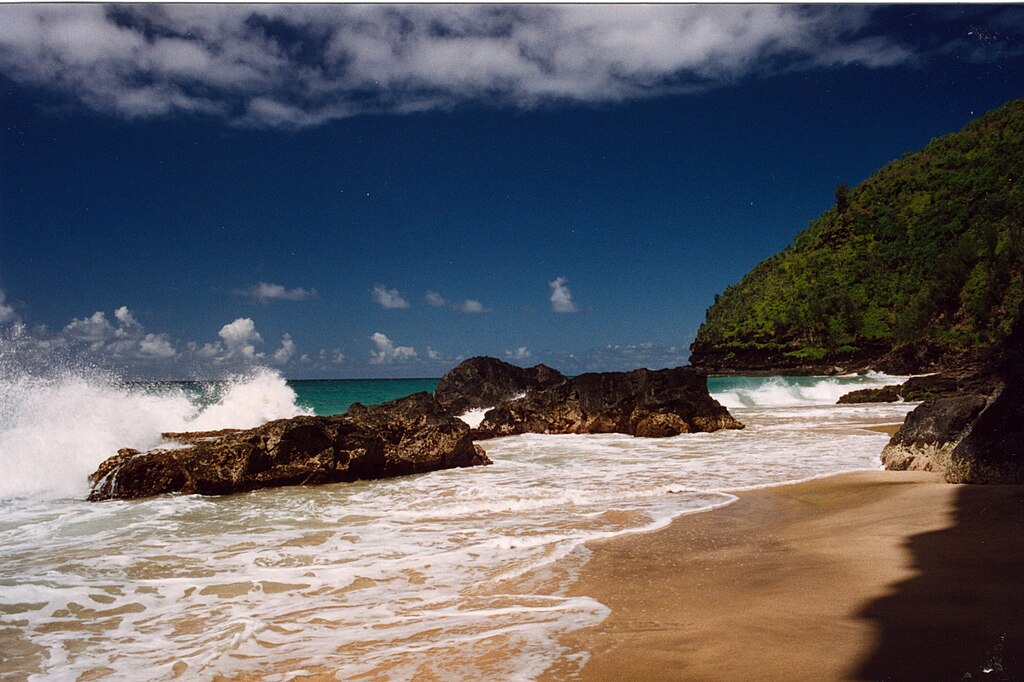 Jeff Kubina, CC BY-SA 2.0, Wikimedia Commons
Jeff Kubina, CC BY-SA 2.0, Wikimedia Commons
Hanakapiai Beach: Terrifying Tides
The rip currents on Hanakapiai Beach are massive, and have pulled people out to sea on more than one occasion. Besides that, the nearest shore that's safe to go on is six miles away.
Hanakapiai Beach: The Toll Rises
The currents of Hanakapiai Beach are nothing to play around with, though people keep trying. Officially, more than 30 people have perished in the tides. However, a local sign that tracks mortalities puts that number in the 80s.
Gansbaai, South Africa
Gansbaai is also called Gans Bay or Gangs Bay. It's located in Western Cape, South Africa, and was supposedly founded back in 1881.
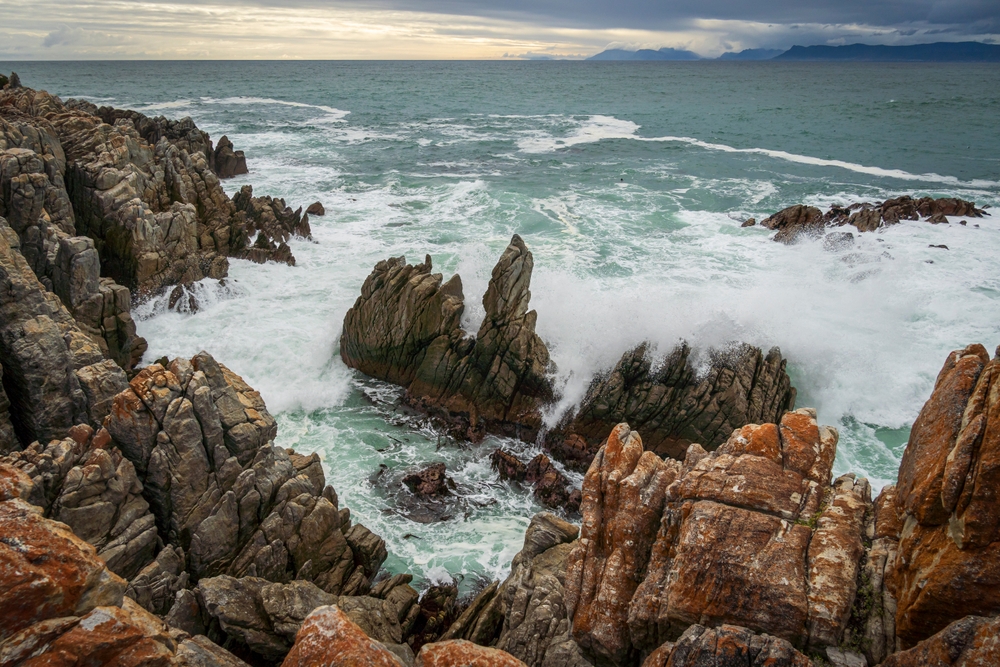 Roger de la Harpe, Shutterstock
Roger de la Harpe, Shutterstock
Gansbaai: Real-Life Jaws
Gansbaai is home to one of the largest and densest population of Great White Sharks in the world. It even has a waterway people call "Shark Alley."
Gansbaai: Not For The Faint Of Heart
In recent years, Gansbaai has become a popular (and relatively safe) destination for cage-diving, where people dive down the water in a steel cage to view the sharks up close. Still, you wouldn't want to get in those waters without one.
Chowpatty Beach, India
Chowpatty Beach is a public beach in Mumbai, India, and is a popular destination during the Hindu festival Ganesh Visarjan. Thousands of people will come there to immerse idols of the god Ganesha in the Arabian Sea.
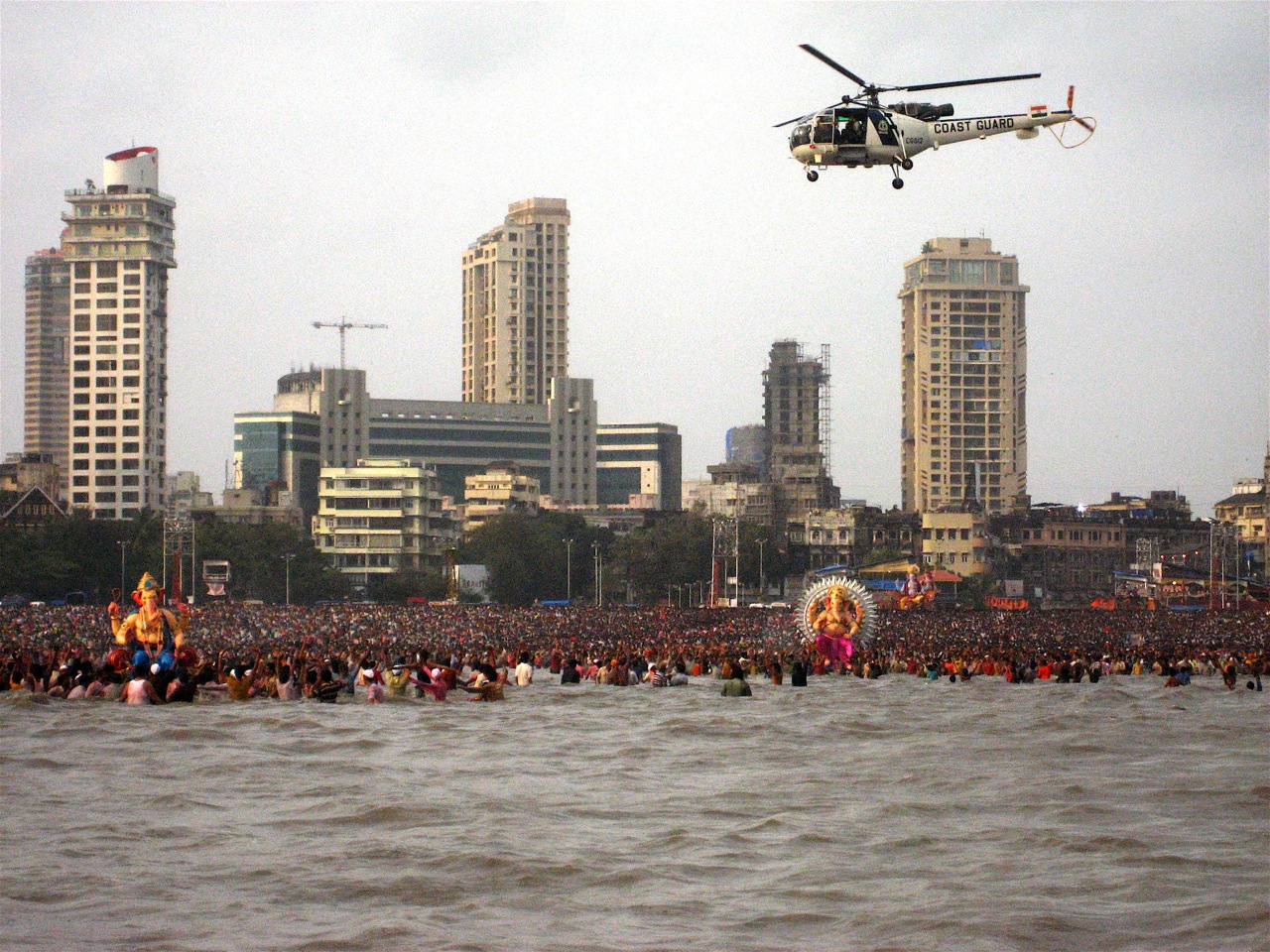 Chris, CC BY 2.0, Wikimedia Commons
Chris, CC BY 2.0, Wikimedia Commons
Chowpatty Beach: Don't Drink The Water
In part because of its high traffic, Chowpatty Beach struggles with pollution. Its water is some of the dirtiest in the world, thanks to waste dumped there from Mumbai.
Chowpatty Beach: Swimming Not Advised
Because of the constant pollution on Chowpatty Beach, experts continually beg people not to swim there, lest they contract symptoms such as diarrhea and sore throats.
Black Sand Beaches of Kilauea, Hawaii
The black sand beaches of Kilauea, Hawaii are simply breathtaking, and unlike almost anything else in the world. They sit on the south-east shore of Hawaii Island.
Black Sand Beaches of Kilauea: Fire and Brimstone
Mount Kilauea is actually an active volcano—one of the most active in all of Hawaii. It has been erupting continuously since 1983, with the last eruption happening in September 2023 and lasting a week.
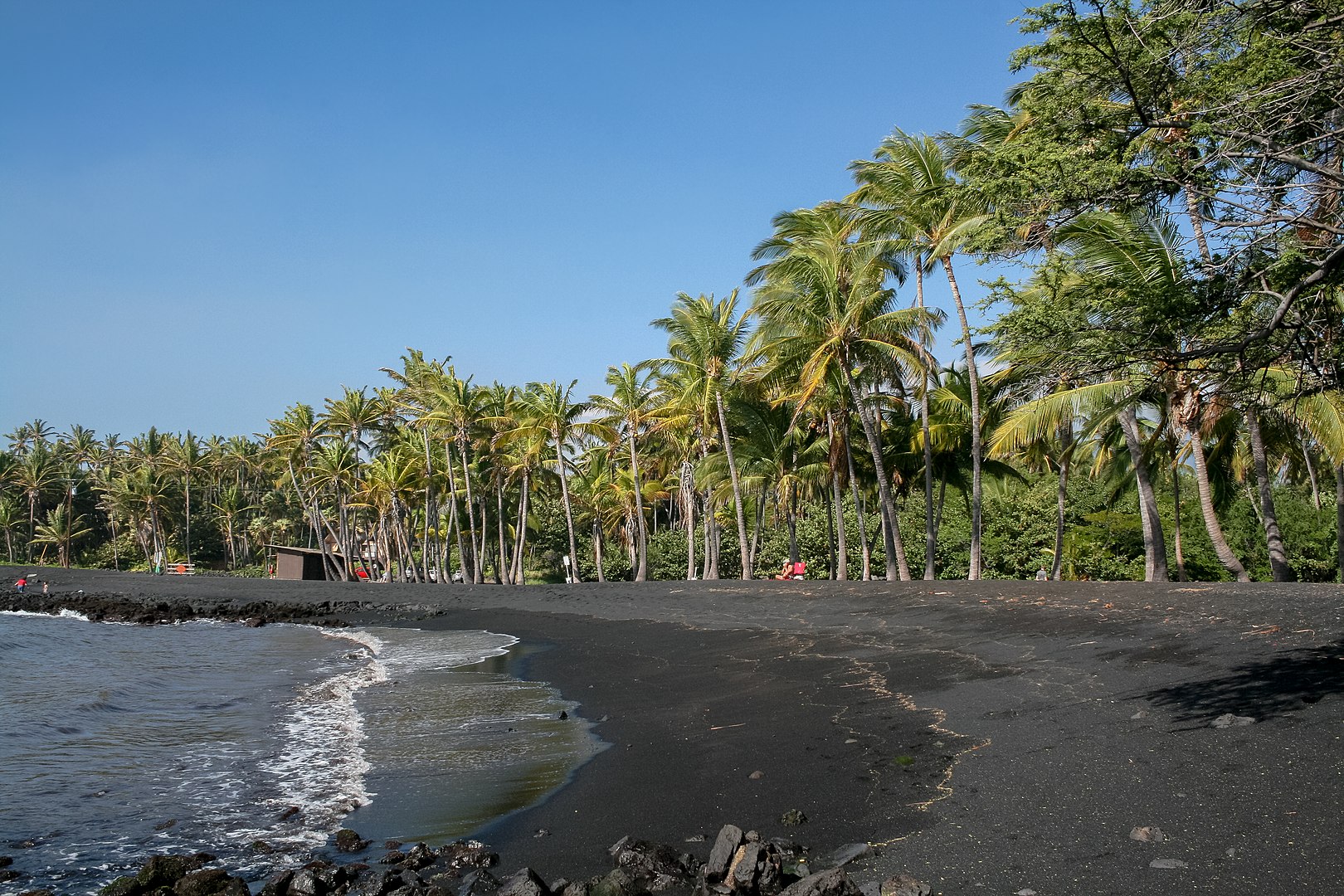 Diego Delso, CC BY-SA 3.0, Wikimedia Commons
Diego Delso, CC BY-SA 3.0, Wikimedia Commons
Black Sand Beaches of Kilauea: Too Hot To Handle
The temperatures of water around Mount Kilauea often hit 155 degrees Fahrenheit, and some parts even peak at 190 degrees. Safe to say it's not a swimming beach.
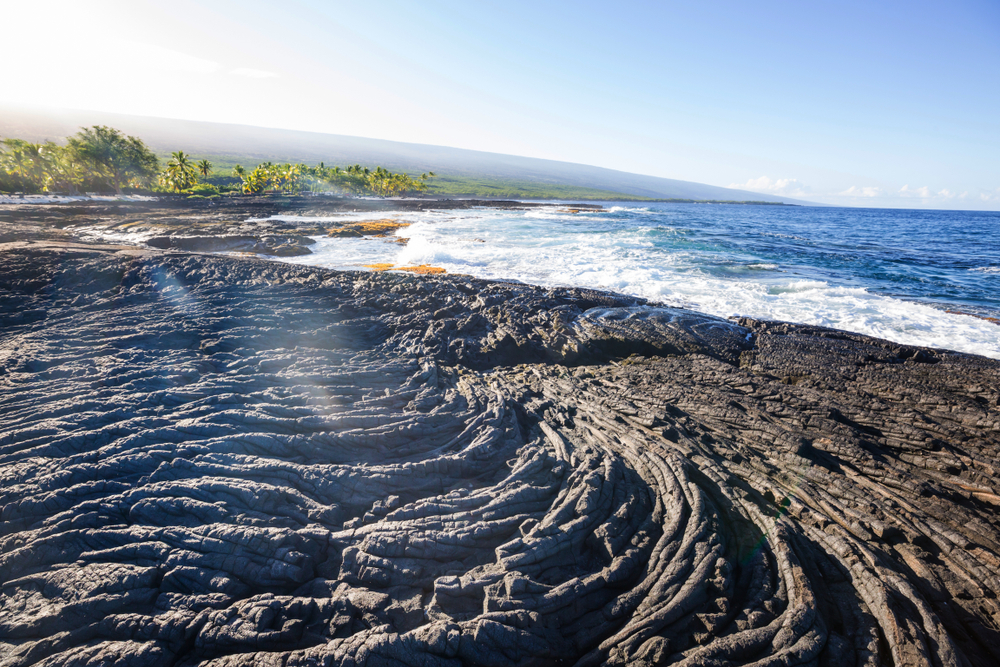 Galyna Andrushko, Shutterstock
Galyna Andrushko, Shutterstock
New Smyrna Beach, Florida
Located on the east coast of Florida in Volusia County, New Smyrna Beach gets lovely breezes from the Atlantic Ocean. It's also a popular surfing destination.
New Smyrna Beach: Predators In The Water
Despite its many charms, New Smyrna Beach has also been called the "Shark Attack Capital of the World" thanks to a popular shark hunting ground nearby. Since 2010, there have been 32 shark attacks on swimmers.
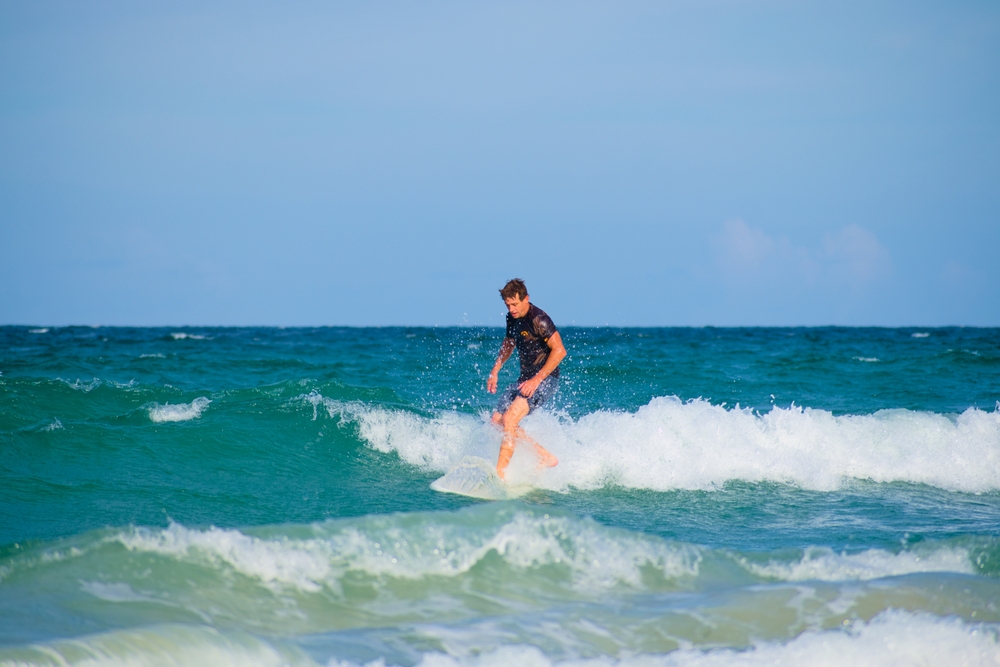 Xianghong Garrison, Shutterstock
Xianghong Garrison, Shutterstock
Fraser Island, Australia
Fraser Island is a sweeping expanse in Queensland, Australia. It's extremely popular with tourists, and half a million people visit the island each year.
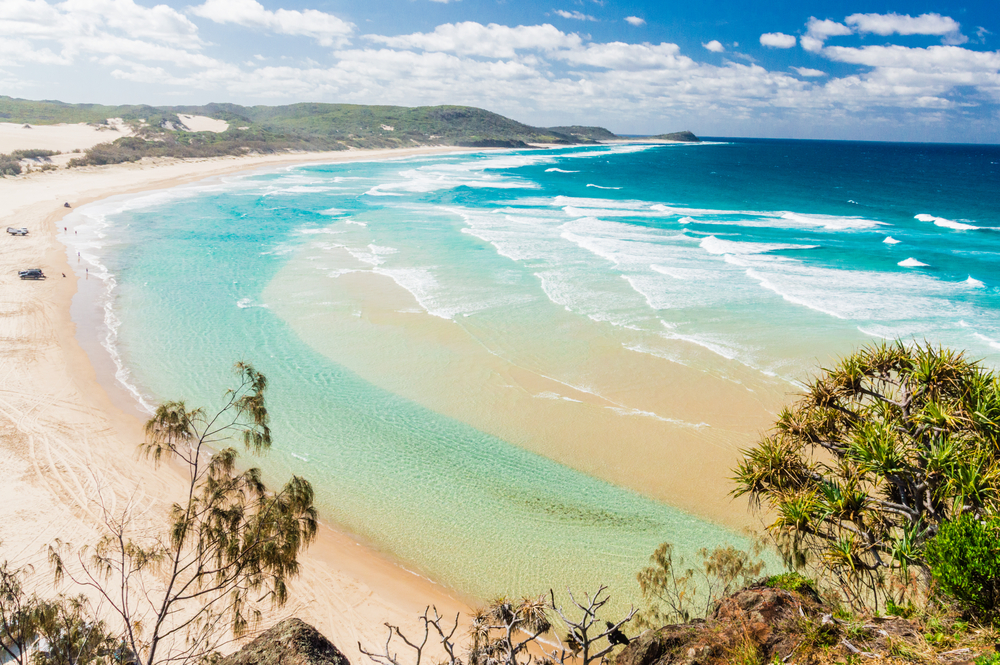 Benedikt Juerges, Shutterstock
Benedikt Juerges, Shutterstock
Fraser Island: Creature Discomforts
Fraser Island is beautiful, but Australia's scary creatures also like its beaches. Sharks and jellyfish are among the dangers in the locale. There are also crocodiles, painful spiders, and dingoes. If those don't get you, strong rip tides also present worries.
Playa Zipolite, Mexico
Playa Zipolite is in southern Mexico, in the state of Oaxaca. Like so many Mexican beaches, it's very popular with backpackers and has beautiful scenery.
Playa Zipolite: The Beach Of The Dead
If you know your Spanish, you might remember that "Playa Zipolite" means "Beach of the Dead." It certainly has that reputation, thanks to its deceptively strong rip tides that prey on beachgoers.
Playa Zipolite: Turning It Around
In the 90s, lifeguard teams began volunteering at Playa Zipolite to prevent mortalities. In so doing, they have helped turn around the reputation of the beach.
Beaches of the Northern Territory, Australia
The Northern Territory in Australia is a vast expanse of land, beaches, and not a whole lot of people. Even so, it still attracts adventurers...and you do have to be brave to go there.
Beaches of the Northern Territory: Beware The Jellyfish
The beaches that dot the Northern Territories have some of the most fearsome jellyfish around: Box jellyfish. These have 60 tentacles that can be six feet long. They are also often nearly invisible in the water.
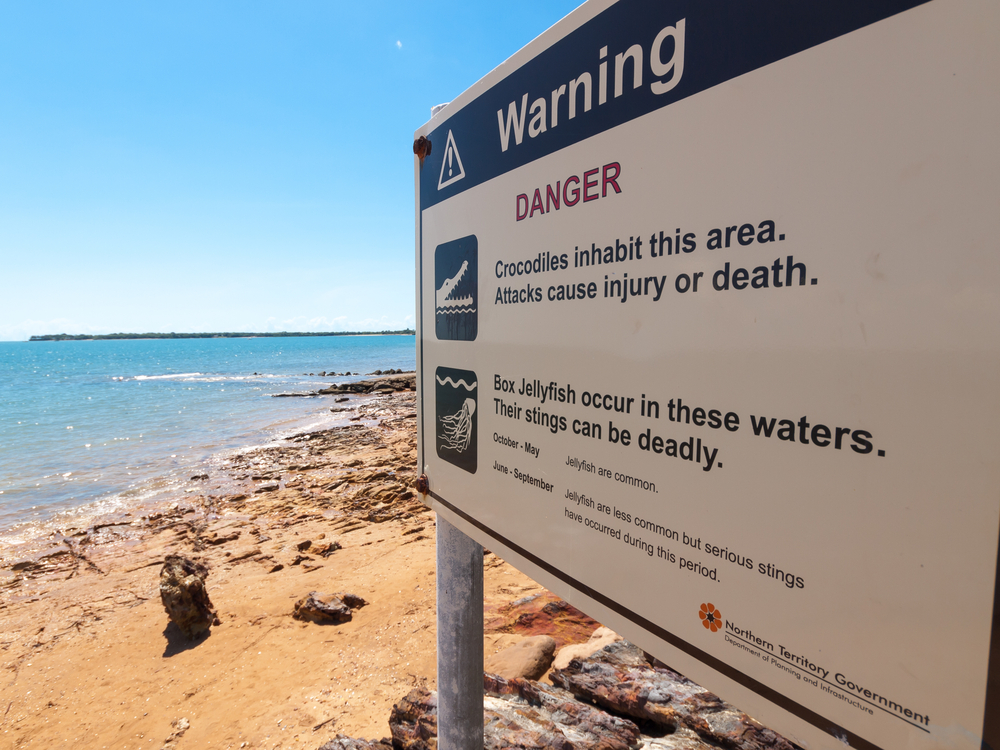 seeshooteatrepeat, Shutterstock
seeshooteatrepeat, Shutterstock
Beaches of the Northern Territory: Stingers
Box jellyfish also have incredibly painful stings. These hurt so much that victims have been known to have heart attacks before they can even stumble to shore. According to the records, almost 80 people have died from box jellyfish stings in Australia.
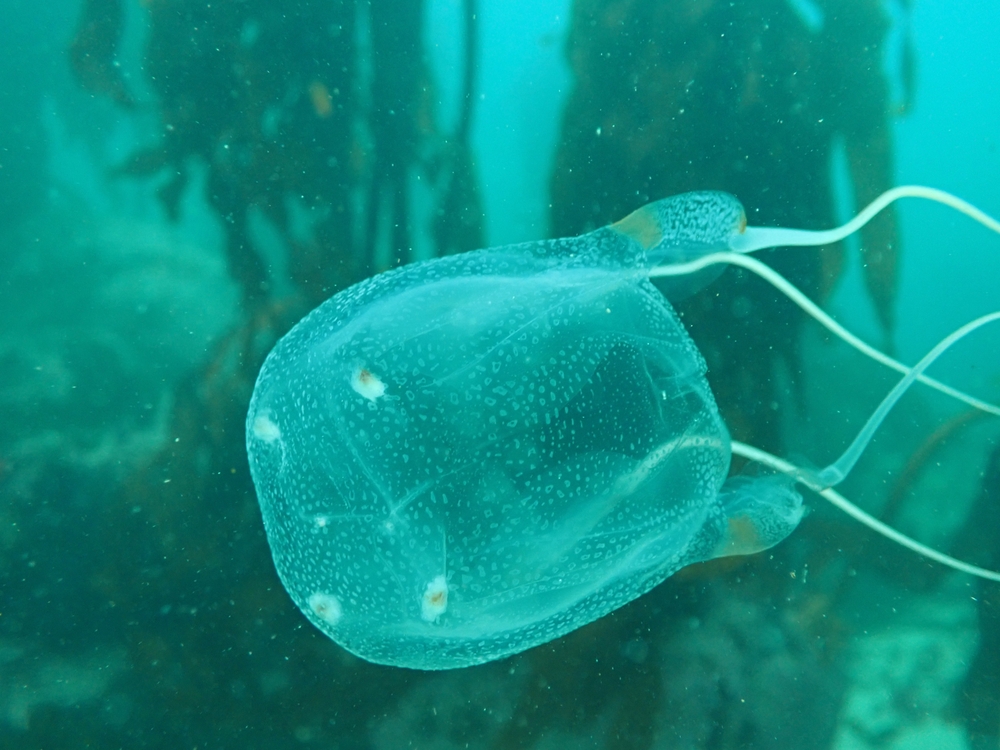 Katherine Wallis, Shutterstock
Katherine Wallis, Shutterstock
Amazon River Beaches, South America
The Amazon River is home to some of the most incredible scenery, flora, and fauna in the entire world, so it's no wonder that people flock to the beaches for everything from bird watching to vacations.
Amazon River Beaches: Enemies In The Water
The Amazon River has such amazing biodiversity that it makes sense that some of its animals are truly scary.
Among them are piranhas, anacondas, and electric eels. Basically, all the fish from your nightmares.
Amazon River Beaches: The Unknown
Scientists have counted over 2,500 different species of fish alone in the Amazon's waters, though they think there are many more that we haven't even seen, much less catalogued. That's a lot of other dangerous critter possibilities.
Utakleiv Beach, Norway
The biggest attraction for tourists on the jaw-dropping Utakleiv Beach in the Lofoten Islands in Norway is the picture perfect view of the Northern Lights.
Utakleiv Beach: Inhospitable Waters
When people go on their trek to watch the Northern Lights at Utakleiv, they are warned to always remain on dry land while on the beach. That's because the islands' waters are so freezing cold, even going for quick dip can be life-threatening.
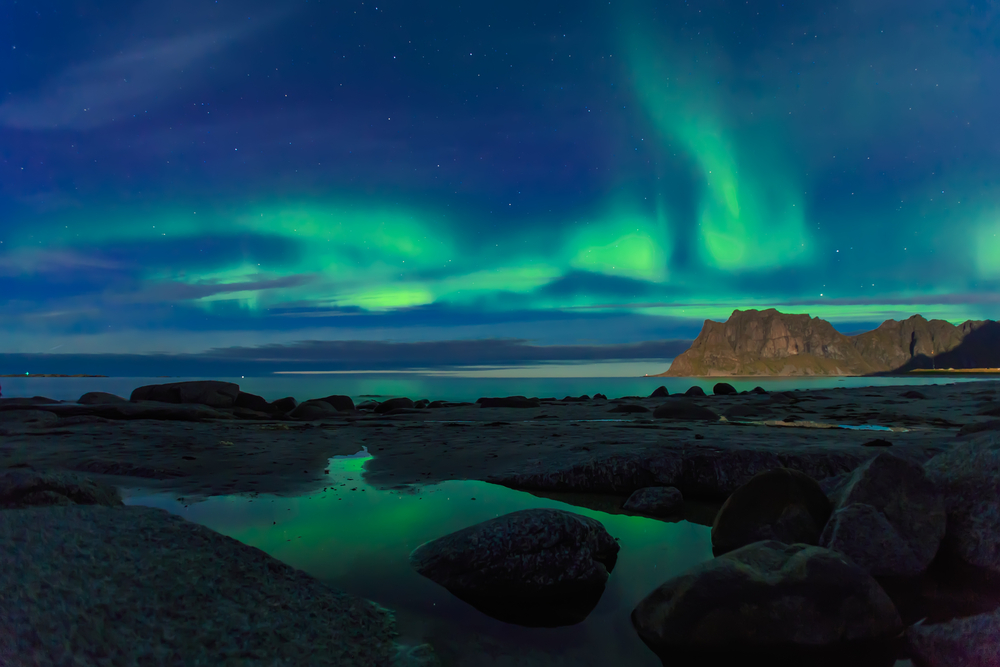 Zhukova Valentyna, Shutterstock
Zhukova Valentyna, Shutterstock
Schitovaya Bukhta Beach, Russia
Schitovaya Bukhta Beach in Russia has some of the most incredible surfing conditions around. It also looks extremely calm and peaceful in good weather.
Schitovaya Bukhta Beach: Beware Below
In truth, very few surfers go to the beach anymore, except maybe the bravest. At the bottom of Schitovaya Bukhta's waters are old nuclear submarines, which are still leaking silent and deadly radiation.
Virginia Beach, Virginia
Virginia Beach is a popular destination spot for Americans and world-travelers alike, with flat sable sands and a great view of the waters.
Virginia Beach: Sly Predators
Virginia Beach is considered quite dangerous because of its wild foxes. The foxes not only take picnickers' food; they also have attacked pets and human beachgoers in the past.
Praia Do Norte, Portugal
The waves in Praia do Norte, Portugal are so massive, they have won Guinness World Records. They've also consistently attracted some of the best surfers in the world to their shores.
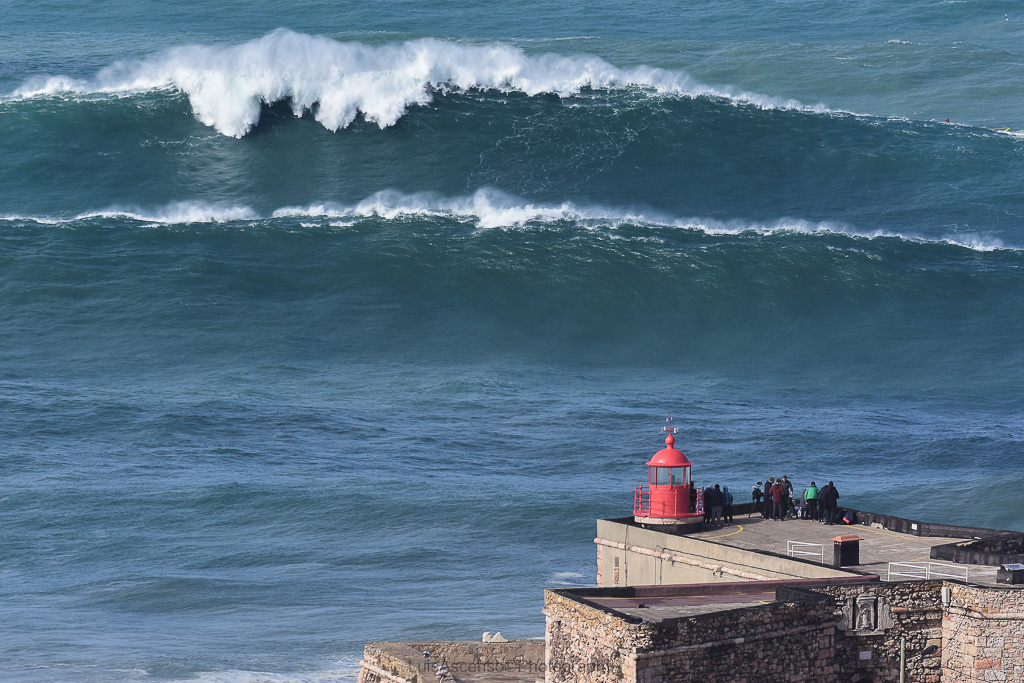 Luis Ascenso, CC BY 2.0, Wikimedia Commons
Luis Ascenso, CC BY 2.0, Wikimedia Commons
Praia Do Norte: Surf At Your Own Risk
Praia do Norte's main attractions, its waves, are also its main danger. It's very easy for an unsuspecting or distracted surfer to be overcome by the enormous white caps. Boats also often capsize.
Bikini Atoll, US Marshall Islands
Bikini Atoll sounds like a fun, splashy place to enjoy a day at the beach. The area around it, on the US Marshall Islands, is certainly beautiful. So is the island's abundant coral.
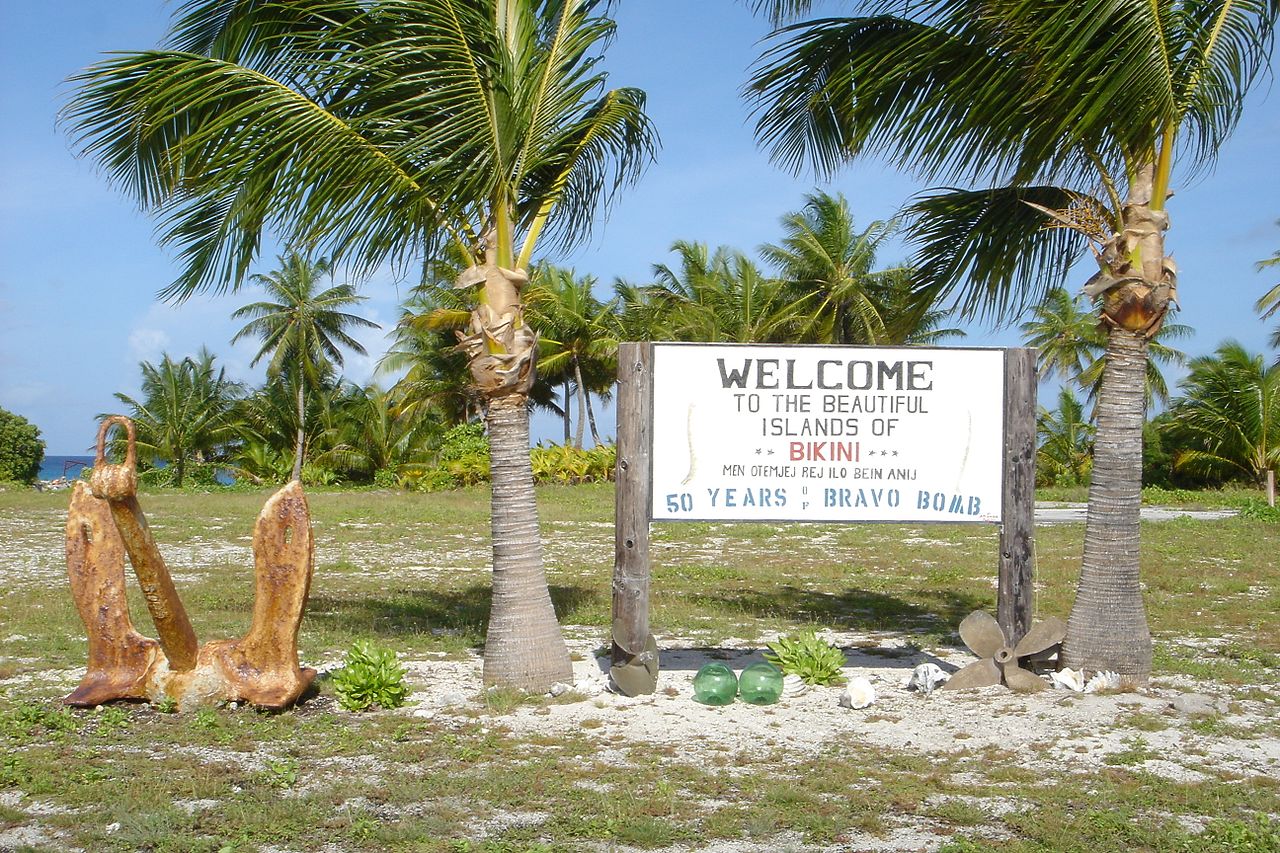 Ron Van Oers, CC BY-SA 3.0, Wikimedia Commons
Ron Van Oers, CC BY-SA 3.0, Wikimedia Commons
Bikini Atoll: A Lasting Legacy
The truth is, the US Army used Bikini Atoll for frequent nuclear testing in the 1940s and 1950s. There are still measurable levels of radiation on the island.
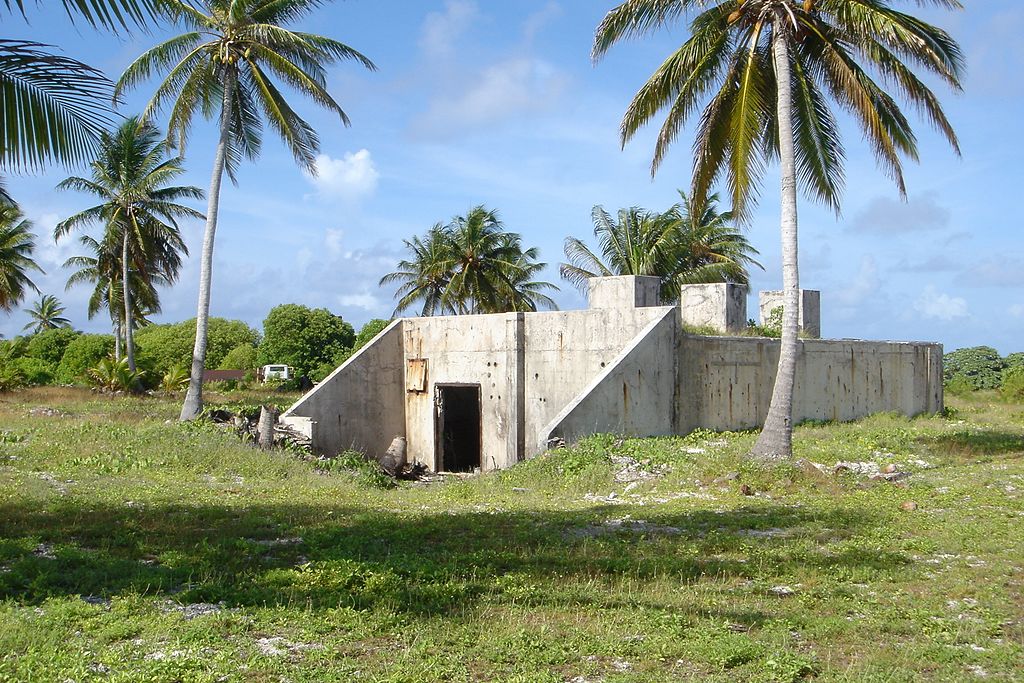 Ron Van Oers, CC BY-SA 3.0, Wikimedia Commons
Ron Van Oers, CC BY-SA 3.0, Wikimedia Commons
Bikini Atoll: Some Hope Left
Bikini Atoll does prove that life always finds a way, however. Although experts warn against eating anything grown on the island (because of the chemicals), they do say it's OK to walk on the beach and even swim in the water.
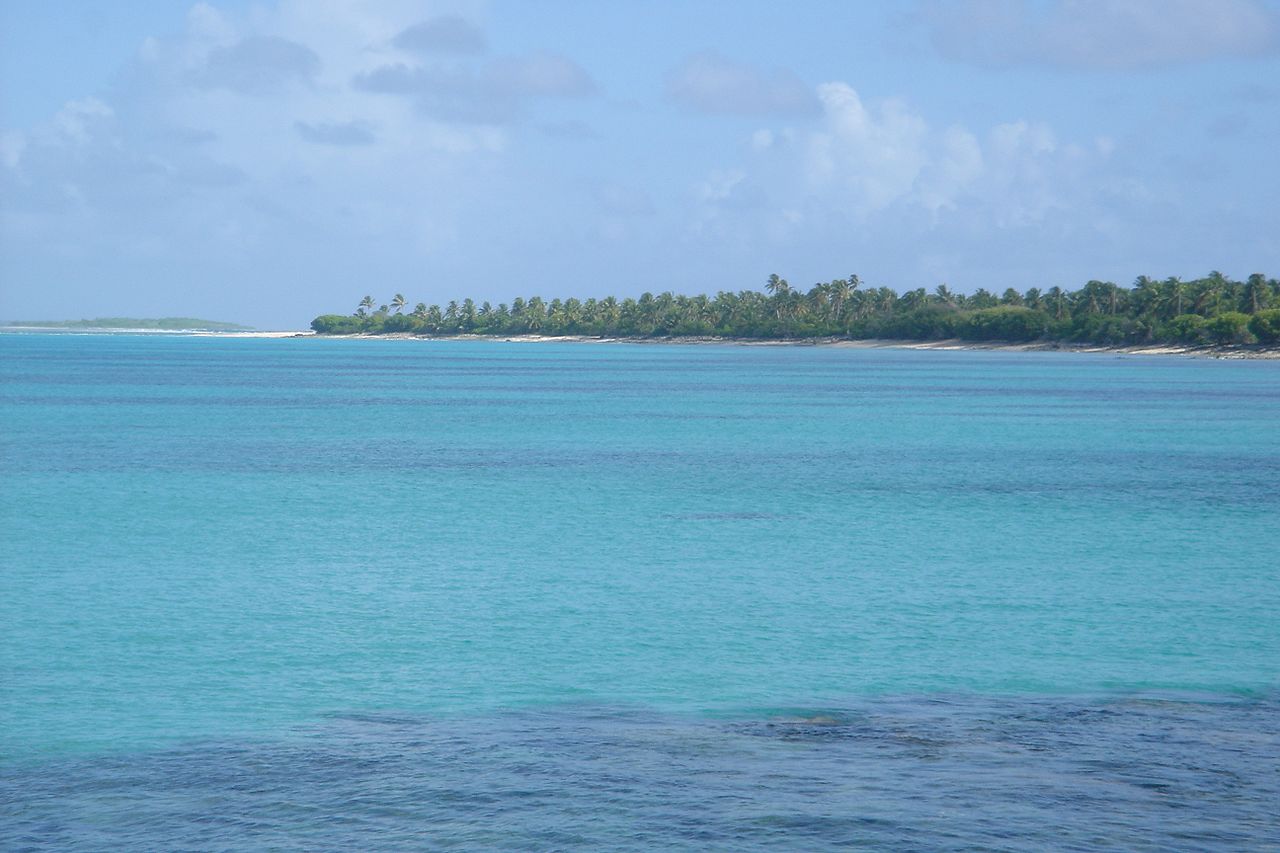 Ron Van Oers, CC BY-SA 3.0, Wikimedia Commons
Ron Van Oers, CC BY-SA 3.0, Wikimedia Commons
Haina Beach, Dominican Republic
The Dominican Republic has some of the most beautiful (and popular) beaches in the Caribbean and the world, and the Haina Beach used to be one of the jewels of its crown.
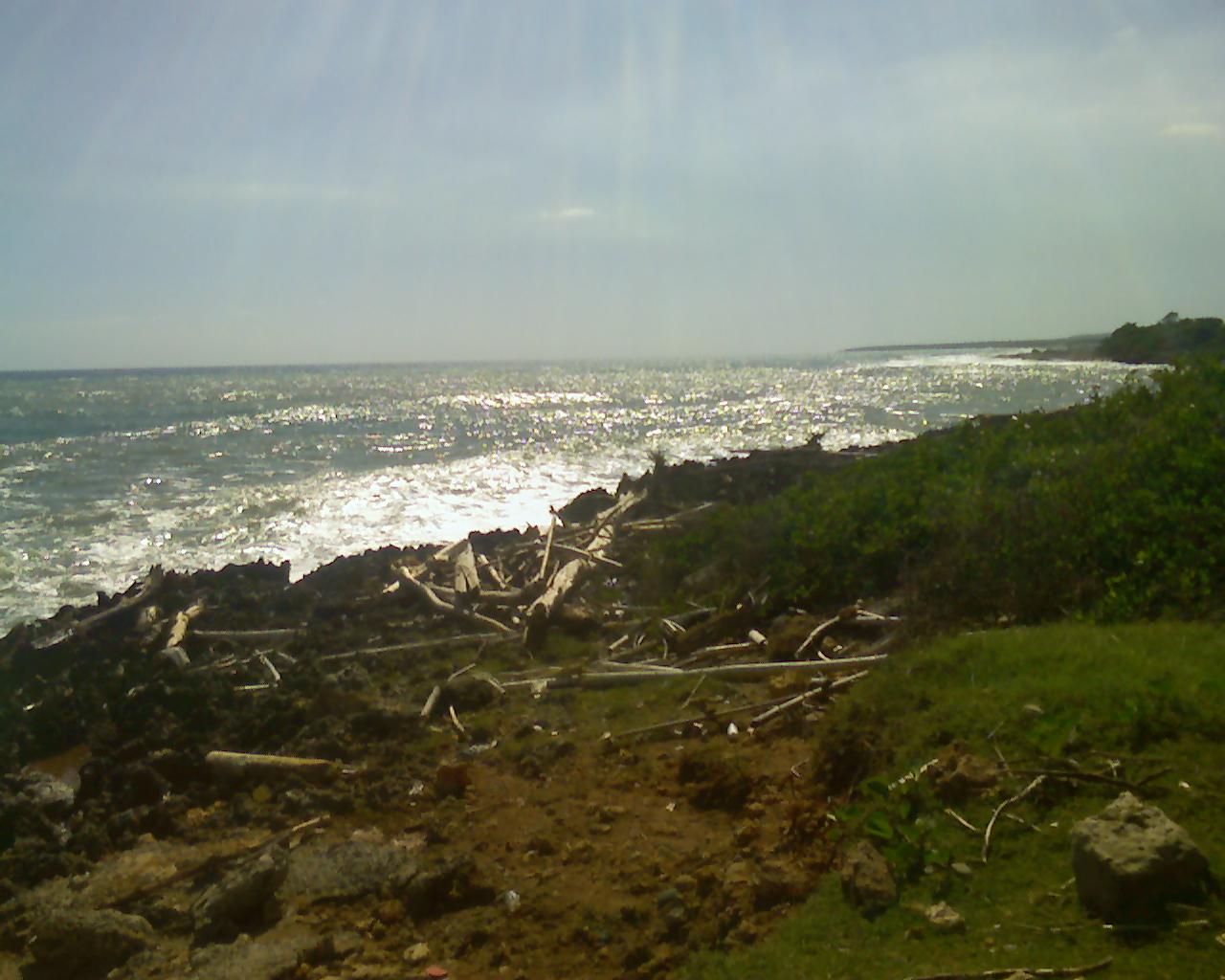 Jason_Rollette, CC BY 3.0, Wikimedia Commons
Jason_Rollette, CC BY 3.0, Wikimedia Commons
Haina Beach: Greed And Danger
A battery recycling center took a horrible shortcut and ended up dumping battery waste on Haina beach. This ended up poisoning the beautiful beach with lead, not to mention the surrounding community.
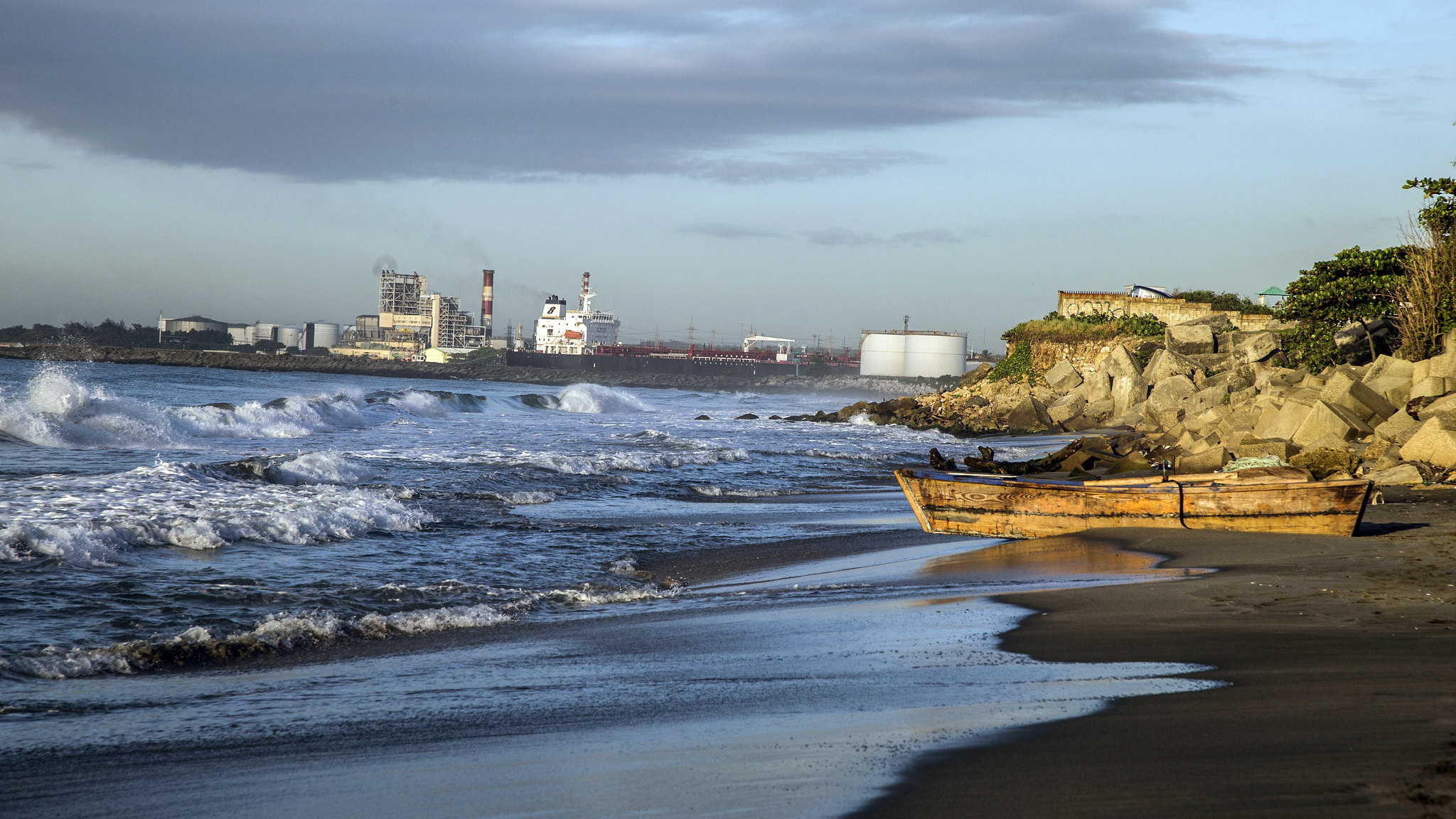 Gobierno Danilo Medina, Flickr
Gobierno Danilo Medina, Flickr
Haina Beach: Recovery
Thankfully, since the late 2000s things have been getting better for Haina Beach. An environmental group did a massive, four-month cleanup of the area, and the recycling center relocated. Even so, be careful.




